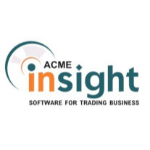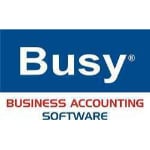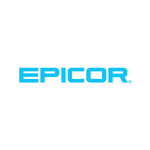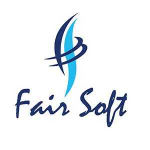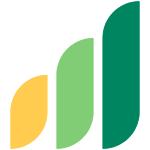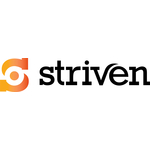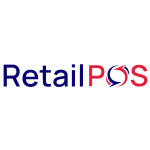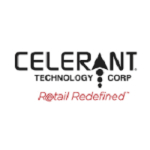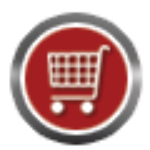List of Best Hardware And Paint Software
Showing 10 of 11 productsAcme Insight is a software designed to streamline and simplify business operations. With its powerful features and user-friendly interface, Acme Insight revolutionizes the way businesses manage their processes, saving time, effort, and resources. Sta...Read Acme Insight Reviews
Busy Accounting Software is a solution for all your financial management needs. With its user-friendly interface features, Busy streamlines your accounting processes and helps you stay on top of your finances. Say goodbye to tedious tasks and hello t...Read Busy Accounting Software Reviews
Epicor Retailis a game-changing software designed for retailers looking to take their business to the next level. With innovative features and user-friendly interface, Epicor Retail is the perfect solution for streamlining operations, increasing effi...Read Epicor Retail Reviews
Ladies and gentlemen, allow me to introduce Fairsoft, the latest software that is revolutionizing the industry. This versatile is a software offers a wide range of features to streamline your daily tasks, making your work easier and more productive...Read Fairsoft Reviews
GraphicSprings is a graphic design software that helps businesses and individuals create stunning visual content easily and effortlessly. With a user-friendly interface and a vast library of customizable templates, GraphicSprings empowers users to br...Read GraphicSprings Reviews
LivePlan is a business planning software that simplifies the process of creating a professional and thorough business plan. With its user-friendly interface and interactive tools, LivePlan helps entrepreneurs and businesses of all sizes turn their id...Read LivePlan Reviews
Striven POS is a point-of-sale solution for your business. With its intuitive design features, Striven POS streamlines your sales process and helps you manage inventory, track sales, and improve overall efficiency. Say goodbye to hassle and hello to...Read Striven POS Reviews
Are you tired of managing your retail business manually? Look no further! Introducing Retail POS, is a solution for all your retail needs. With Retail POS, say goodbye to tedious tasks and hello to efficient and organized operations. Boost your busin...Read Retail POS Reviews
Celerant Cumulus Retail a dynamic and innovative software designed to enhance the retail experience for businesses of all sizes. With its user-friendly interface features, Celerant Cumulus Retail empowers retailers to streamline operations, increase...Read Celerant Cumulus Retail Reviews
HDPOS Smart is a solution for all your point-of-sale, billing, and inventory management needs. With its user-friendly interface features, HDPOS Smart simplifies your business processes and helps you grow your business. Say goodbye to traditional meth...Read HDPOS Smart Reviews
- What Is Hardware and Paint Software?
- Top Reasons Why Businesses Need Hardware and Paint Software?
- What Are the Top Key Features of Hardware and Paint Software?
- What Are the top benefits of Hardware and Paint software?
- What Are the Steps to Choose the Right Hardware and Paint Software?
- What are the Types of Hardware and Paint software for different industries?
- What Are the Technology Trends for Best Hardware and Paint Software?
- What Are the Deployment Options for Hardware and Paint Software?
What Is Hardware and Paint Software?
Hardware refers to the tangible components of a computer system, encompassing elements such as computer memory, processor chips, the motherboard, hard disk drive, graphic card, power supply, sound card, and other components that facilitate the exchange or reception of inputs, such as mice or keyboards.
Hardware and paint software software refers to a computer application that enables users to generate, modify, or sketch visual graphics and various components on the display of a computer system. This artistic technique bears a resemblance to conventional canvas painting, employing a range of colors, brushes, and effects to generate visual representations.
The top hardware and paint software produces output that closely resembles photo-realistic images, suitable for exporting and printing purposes. Designers have the option to utilize basic geometric forms, unique hand-drawn illustrations, or pre-existing stock pictures in order to develop their designs. Paint software is capable of accommodating several file formats, including PNG, JPG, TIFF, and others. The utilization of the best hardware and paint software facilitates the production of digital artwork, logos, animations, photo enhancements, and various other applications.
Top Reasons Why Businesses Need Hardware and Paint Software?
- The utilization of hardware and paint software enables firms to generate visual depictions of products, branding, and processes.
- The utilization of this technology allows organizations to construct economically viable three-dimensional representations of prospective items.
- The product visualization process is made more straightforward by the provision of user-friendly tools that facilitate the design of 3D models.
- The utilization of this approach aids in the reduction of design durations and the minimization of overhead expenses linked to the process of product creation.
- The utilization of top hardware and paint software allows organizations to conduct more efficient testing of different designs and color combinations for their products.
- The utilization of precise simulations of real-world processes guarantees the feasibility of the product.
- The utilization of this technology facilitates the seamless dissemination of vital technical data between various divisions of enterprises, as well as on a global scale.
- The platform offers organizations a range of tools that may be utilized to enhance the performance of their products through refinement and optimization.
- The improvement of communication inside firms facilitates enhanced efficiency and expedites the achievement of desired outcomes.
- The platform provides entrepreneurs with the opportunity to decrease the time required to bring their products to market.
- The integration of hardware systems with enterprise software is facilitated by it.
- The best hardware and paint software provides firms with the chance to engage in the exportation or importation of product designs and virtual prototypes.
- The utilization of this technology allows enterprises to develop customized experiences for both their consumers and products.
- The reduction of development costs and time-to-market for products is beneficial for businesses.
- The integration of hardware and paint software components enables enterprises to enhance scalability and performance.
What Are the Top Key Features of Hardware and Paint Software?
The top key features of hardware and paint software include:
1. Brush Stylization: The best hardware and paint software allows users to personalize brush strokes in order to produce seamless artwork and lifelike textures.
2. Color Palettes: Users have the ability to generate personalized color palettes, allowing for efficient access to certain shades.
3. Gradients: Gradients can be employed by users to incorporate color and translucency, hence facilitating the creation of customized shading effects.
4. Layer Support: Individuals have the ability to construct multiple layers in order to form a sophisticated composition that exhibits visual unity.
5. Clipping Masks: Individuals have the ability to modify and manage the transparency and perceptibility of the layers contained inside a composition.
6. Brush Controls: Users possess the capability to personalize various attributes of brushes, such as sizes, shapes, opacity, flow, wetness, and other pertinent aspects, in order to achieve desired visual effects.
7. Transformations: Individuals have the ability to manipulate and elongate images in order to generate distinctive compositions.
8. Post-Processing Filters: Users have the ability to manipulate various effects in order to enhance the overall quality of their artwork.
9. Export Wizard: Artwork can be exported by users into a diverse range of file formats, compatible with different platforms and devices.
10. Built-in Templates: Users have the ability to access a diverse range of templates in order to efficiently generate intricate compositions.
What Are the top benefits of Hardware and Paint software?
1. Greater accuracy in painting projects: The utilization of the best hardware and paint software enhances the precision of painting endeavors by virtue of its capacity to measure accurately. Instead of depending on a process of trial and error, experts now have the capability to obtain precise measurements in real time, thus avoiding unnecessary wastage of paint, time, and resources.
2. Streamlined workflow: The utilization of hardware and paint software optimizes the various stages involved in the painting process, ranging from initial planning to final completion. As a result, this integration facilitates efficiency gains, leading to significant savings in terms of time, financial resources, and energy expenditure across a wide range of projects.
3. Increased productivity: The implementation of automation in specific aspects of the workflow is known to enhance the efficiency of painters during their work, as facilitated by top hardware and paint software. Consequently, a greater number of jobs can be accomplished within a given timeframe.
4. Better job satisfaction: Engaging in paint projects can often be characterized by their laborious and time-consuming nature. However, the utilization of these programs can effectively alleviate the challenges associated with such endeavors, making them more manageable and efficient. As a consequence, the painter experiences heightened job satisfaction due to the increased manageability of their workload.
5. Improved customer service: The utilization of paint software enhances the quality of customer service by enabling painters to furnish customers with precise estimations. The implementation of this strategy mitigates potential issues and enhances the level of client contentment.
6. Cost savings: Top hardware and paint software is a valuable tool that effectively reduces uncertainties and inefficiencies, resulting in significant cost reductions across many projects.
7. Simplified maintenance: The utilization of paint software facilitates the streamlining of painting project maintenance through its inherent tracking functionalities. The precision of this measurement typically serves to mitigate unnecessary expenditures on maintenance materials and services.
What Are the Steps to Choose the Right Hardware and Paint Software?
1. Identify the purpose: This will facilitate comprehension regarding the requisite functionalities and characteristics of the software and hardware.
2. Research the types of hardware and software available: Examine the characteristics of each alternative and ascertain which one would be most suitable for your requirements.
3. Cost of the hardware and software: It is necessary to assess the cost-effectiveness of the software and hardware in relation to the benefits it provides.
4. Test the software: software businesses provide a complimentary trial period to assist individuals in determining the suitability of their product.
5. Ask questions: It is advisable to not hesitate to reach out to the manufacturer of the program or hardware for further clarification or details. It is vital to ensure a comprehensive understanding of the product prior to engaging in a purchase.
6. Read reviews: Examine the perspectives of individuals regarding the efficacy and functionality of the best hardware and paint software and components in question. This can provide further understanding in facilitating the process of reaching a final conclusion.
7. Purchase the hardware and software: Once the necessary research, testing, and inquiry have been conducted, one may proceed to acquire the software and hardware components.
What are the Types of Hardware and Paint software for different industries?
Hardware and Paint Software can also vary greatly depending on the industry. Here are a few examples of industry-specific hardware and paint software:
- Graphic design software for logo design
- Video editing software for movie production
- Architectural software for 3D modeling and visualizing
- HVAC software for energy analysis
- CAD software for engineering design
- Textile software for fabric design
- Automotive software for vehicle design
- Photo editing software for digital imaging
- Cardiology software for medical imaging
What Are the Technology Trends for Best Hardware and Paint Software?
The key technology trends for best hardware and paint software include the following:
1. Cloud Computing - Cloud computing has emerged as a prominent technology trend in the year 2020. This technological innovation enables enterprises to operate with enhanced efficiency through the remote storage, management, and processing of data, hence eliminating the necessity for on-site computing infrastructure. The utilization of this technology aims to enhance scalability, flexibility, and cost-effectiveness.
2. Artificial Intelligence - The field of artificial intelligence (AI) is seeing increased prominence in the year 2020. The technology is currently being employed to streamline business operations and extract valuable insights from data. Artificial intelligence (AI) has demonstrated significant utility in various domains, including predictive analytics, natural language processing, image identification, machine learning, and other related areas.
3. 5G Network - The 5G technology represents the most recent advancement in the field of mobile network technology. The technology exhibits speeds that are up to tenfold greater than the existing 4G LTE, while also demonstrating the capability to accommodate far bigger quantities of data traffic. The implementation of 5G networks would enhance businesses' ability to effectively cater to their consumers' needs by providing accelerated download speeds and nearly instantaneous communication capabilities
4. Internet of Things (IoT) - The Internet of Things (IoT) refers to a network of physical devices, cars, and various objects that are equipped with electronics, software, sensors, and connectivity. This enables them to gather and exchange data. The implementation of Internet of Things (IoT) technology enables enterprises to enhance operational efficiency and augment customer engagement.
What Are the Deployment Options for Hardware and Paint Software?
The selection of deployment options for top Hardware and Paint software is primarily contingent upon the specific platform and features inherent to the software under consideration.
For instance, in the case of software that is designed for Windows operating systems, it can be implemented by means of an MSI installer or a Windows Installer package.
Mac-based hardware and paint software can be deployed via several techniques, including Apple's App Store, as well as alternative installation approaches such as disk images or web installers. Moreover, in the case of cloud-based software, it has the potential to be implemented through many cloud deployment approaches, including Software as a Service (SaaS), Platform Cloud as a Service (PCaaS), or Infrastructure as a Service (IaaS).
An alternative approach could involve the utilization of container technologies, such as Docker, for the deployment of the software. Regarding the hardware, potential deployment alternatives encompass the utilization of readily accessible devices such as USB drives or Bluetooth dongles, which facilitate the connection between the hardware and the computer.
The selection of deployment choices is contingent upon the specific platform, features, and software and hardware requirements.
